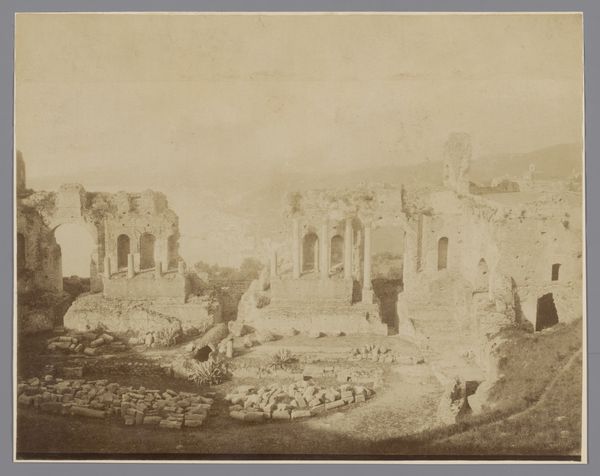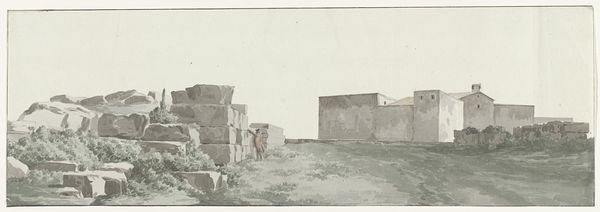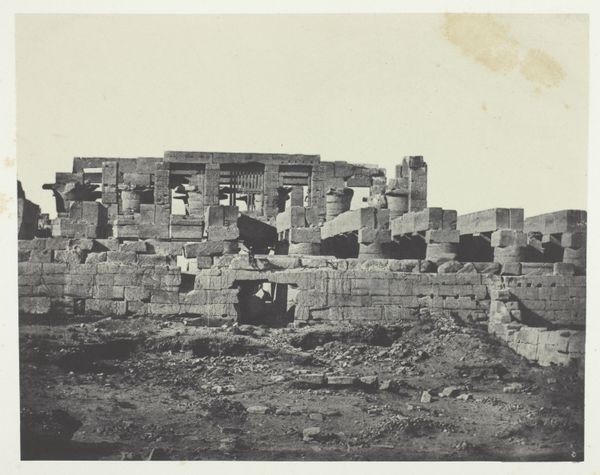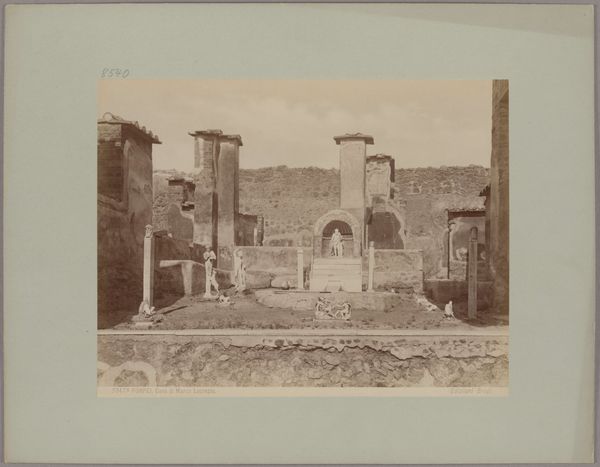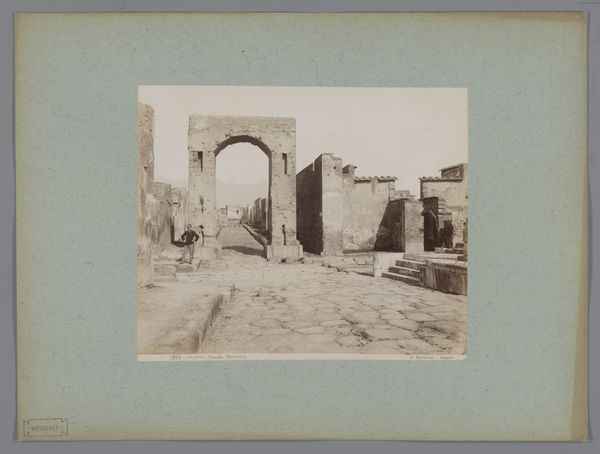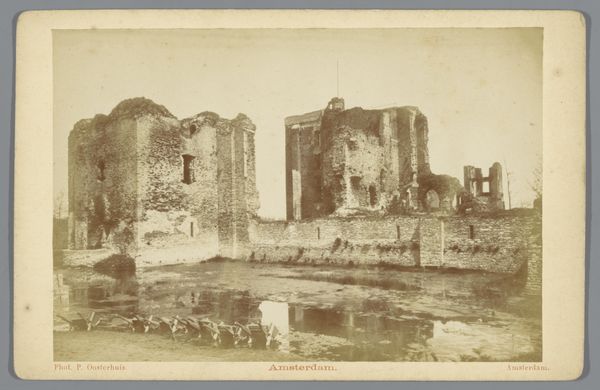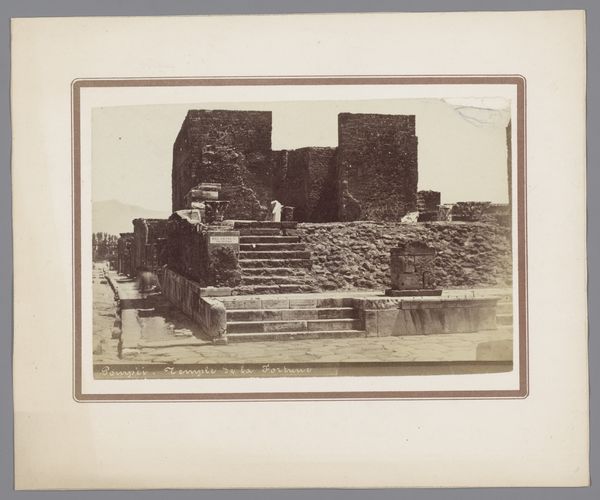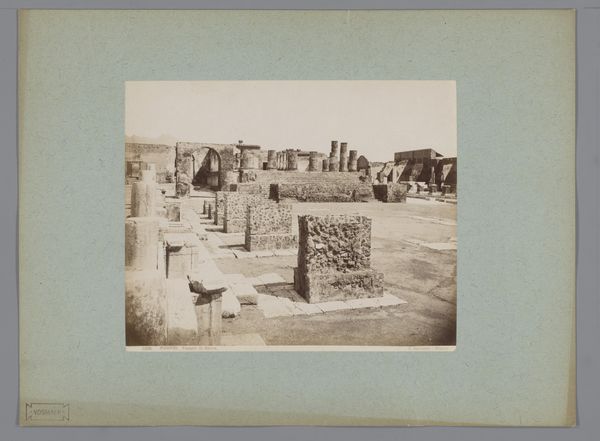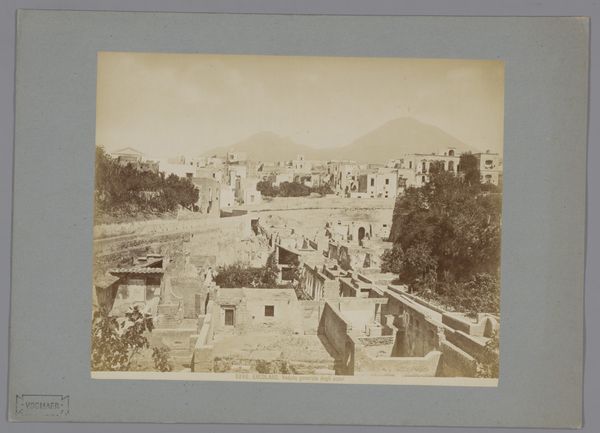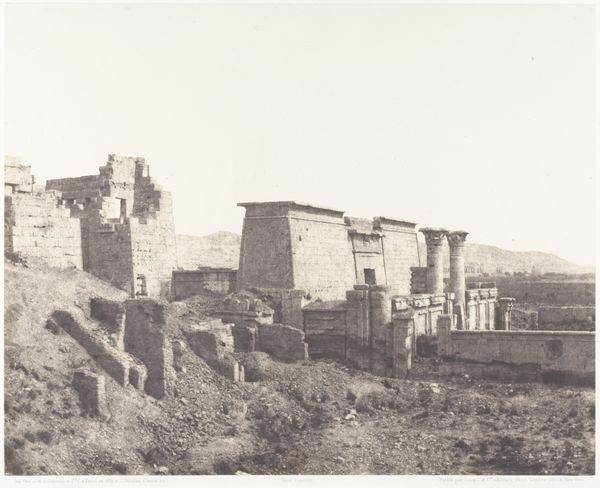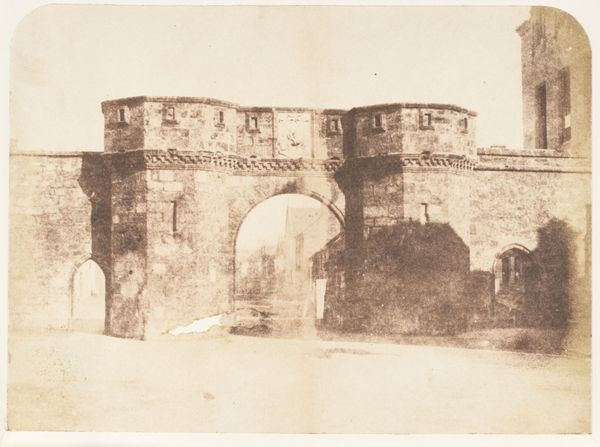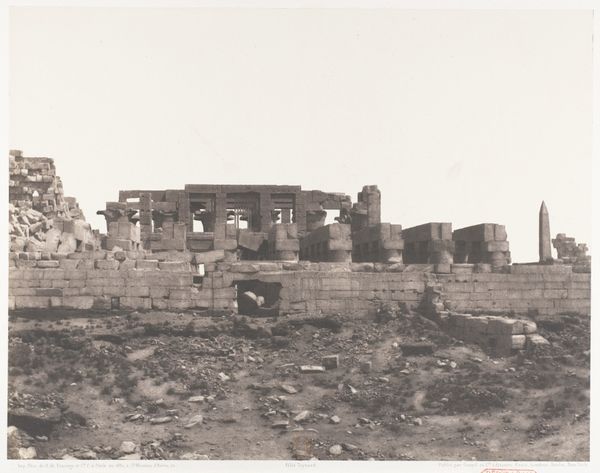
print, photography
# print
#
landscape
#
classical-realism
#
photography
#
ancient-mediterranean
#
cityscape
Dimensions: 5 3/4 × 8 3/8 in. (14.6 × 21.3 cm)
Copyright: Public Domain
Alfred-Nicolas Normand made this photograph of the Temple of Jupiter in Pompeii sometime in the mid-19th century. It's a salt print, meaning that ordinary writing paper was sensitized with a solution of salt and silver nitrate, then exposed to sunlight through a negative. This process renders an image of soft, almost painterly quality. What really interests me is the relationship between photography and archaeology at this time. Photography was, and is, often considered an objective medium, but it is always constructed through choices: what to focus on, how to frame it, how long to expose the paper to light. Here, the artist has chosen to show us the grandeur of the Temple, but also its ruinous state, with damaged columns and a general atmosphere of decay. The image thus speaks both to the advanced engineering of the Roman Empire and the ravages of time. It is a poignant reminder of the labor invested in creating the temple, the historical events that led to its destruction, and the cultural forces that led Normand to record it for posterity.
Comments
No comments
Be the first to comment and join the conversation on the ultimate creative platform.
